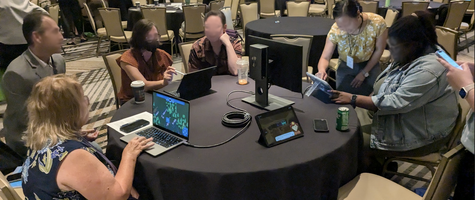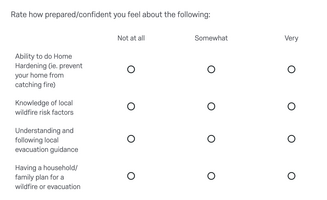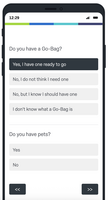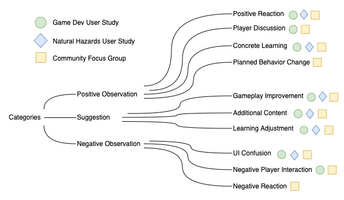Measuring Impact: How We Think About Learning and Behavior Change in Wildfire Games





When designing games for impact, especially for climate resilience, success isn’t just about engagement or polish. It’s about what players take away, and whether it helps them make better decisions in the long run.
From the start, we knew we wanted our wildfire games to do more than inform. Our goal was to shift perspectives, deepen empathy, and spark real-world preparedness actions and changes in behavior. But how do you measure something like that?
Here’s how we approached it:
🎯 Pre/Post Surveys: Tracking Knowledge and Behavioral Intent
We ran user studies where players completed pre- and post-game surveys to help us assess:
-
Changes in wildfire preparedness knowledge
-
Shifts in willingness to change behavior (e.g. creating go bags, pre-planning evacuation routes, or talking with neighbors)
These responses helped us see not only whether players learned new information, but whether they intended to act on it—a crucial step toward real impact.
🧠 Think-Aloud Playtesting: Capturing Player Insight in the Moment
During many sessions, we used a think-aloud protocol—asking players to speak their thoughts aloud while playing. This gave us a window into how they were processing information, what surprised them, what felt confusing, and what choices they struggled with.
These moments often revealed deeper learning than a survey could capture. Players reflected on personal experiences, challenged their assumptions, or shared how they might change their evacuation plan based on something in the game. They also demonstrated information-seeking behavior: pointing out things they would like to look up to learn more about after playing.
🤝 Interviews with Outreach Professionals: Aligning With Real-World Messaging
We also conducted interviews with professionals working in wildfire awareness and emergency preparedness—from fire safe councils to offices of emergency services. We wanted to know:
-
How do they talk about wildfire risk?
-
What messages are hardest to communicate?
-
What kinds of tools would help them reach more people?
These conversations shaped everything from the tone of our scenarios to how we framed consequences and household diversity. Most importantly, they helped us make the game usable, not just informative. We designed with integration in mind, so these organizations could use the game in their own outreach and education efforts.
Why It Matters
We’re not just trying to build understanding—we’re trying to build resilience. Measuring knowledge, behavior, and alignment with community needs helps us know if our games are doing their job.
And it reminds us that serious games are part of a larger system: a tool that works best when it fits into the hands of those already doing the work.
Wildfire Minigames Collection
A collection of minigames to help people develop preparedness and resilience to wildfire
| Status | Released |
| Authors | Wildfire UCSC, Yiyang Lu |
| Genre | Simulation |
| Tags | minigames, wildfire |
More posts
- Taking It to the People – Community Playtesting and Sharing Our Wildfire Games9 days ago
- Finding Your Community15 days ago
- Launching a Game for Impact: The Challenges without a Marketing Budget16 days ago
- The Benefits of Multiplayer, and How to Keep it in Scope17 days ago
- Approaching User Experience: Crafting an Interactive and Immersive UI17 days ago
- Implementation: Simulating Dual-Lane Evacuation Traffic18 days ago
- Art Direction: Why We Chose a Stylized, Low-Poly Look for Our Wildfire Games19 days ago
- Tech Discussion: Simulating Fire That Feels Real19 days ago
- From Workshop to Production – Turning Community Stories into Playable Scenario...20 days ago

Leave a comment
Log in with itch.io to leave a comment.